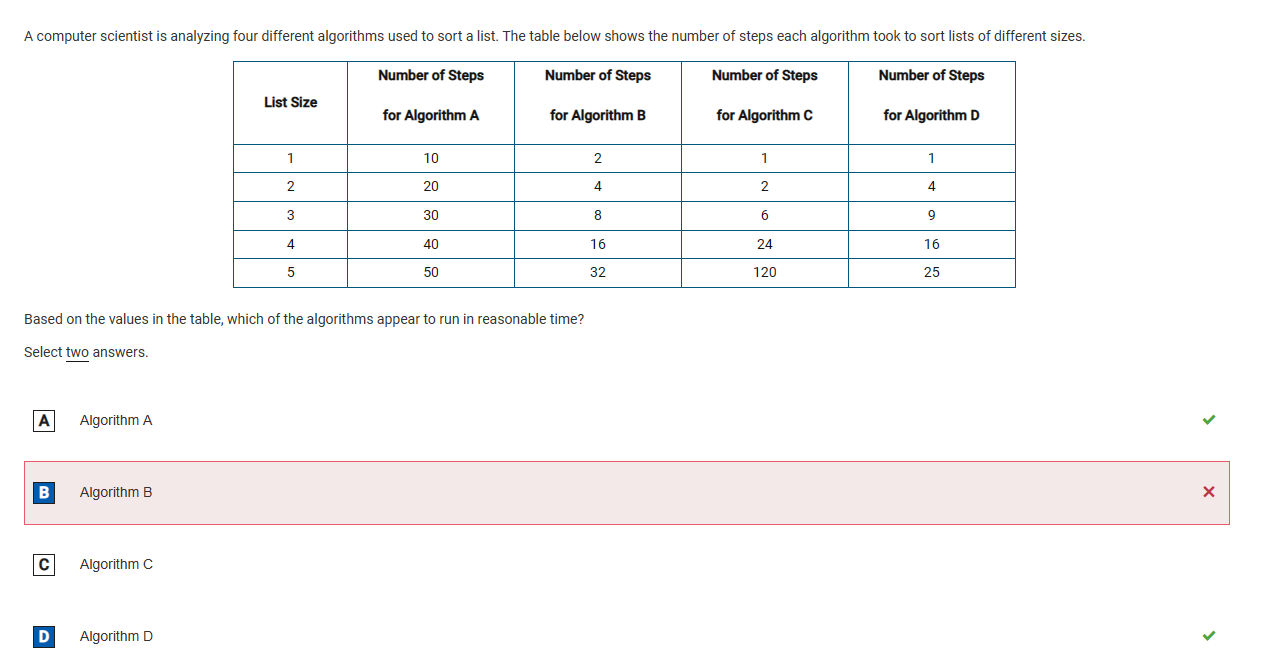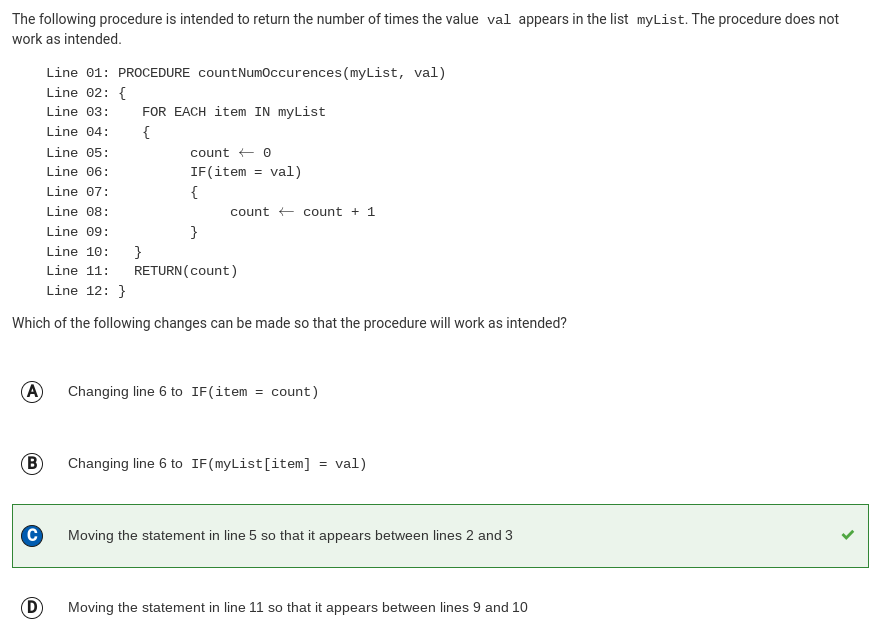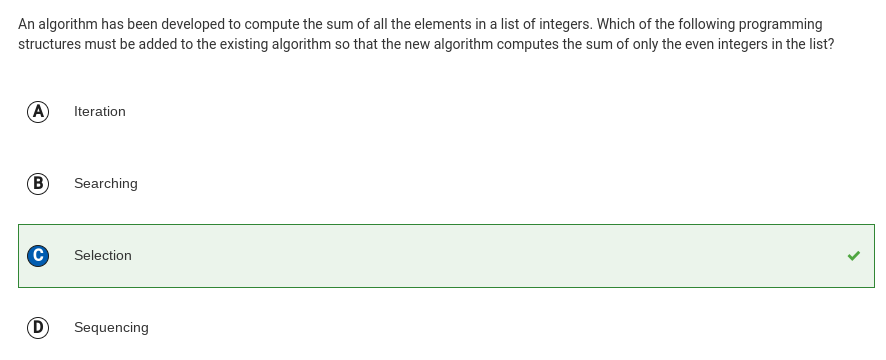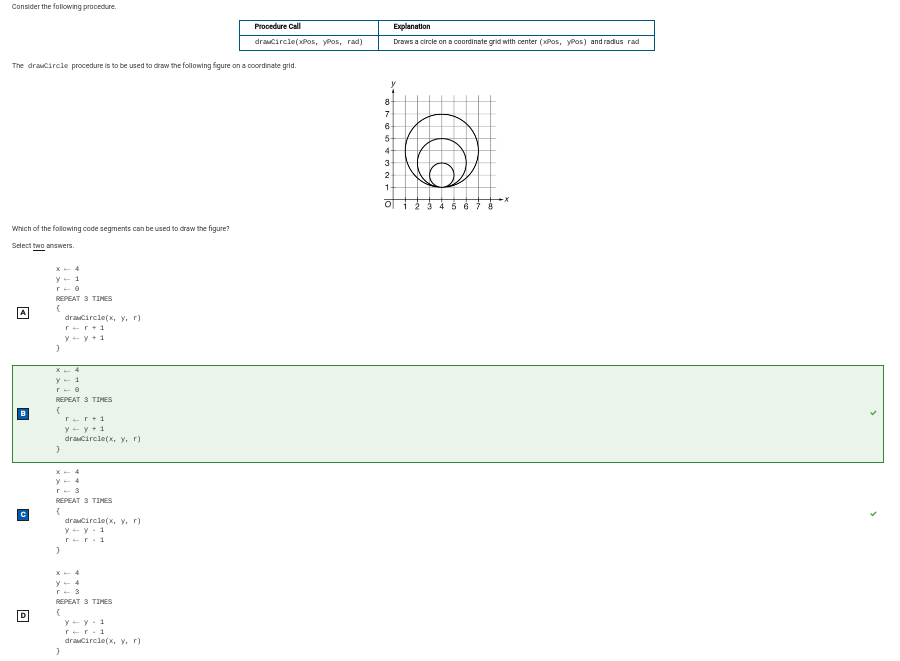Reflection on the Trimester 2 Final Exam
On February 27th, our Final Exam for Trimester 2 was opened and it was a Multiple Choice Test on CollegeBoard with 50 Questions and this is my reflection as well as any test corrections
Taking the Multiple Choice Test
We were assigned a 50 Question Multiple Choice Test in preparation for the AP Exam and we know what to expect on that day. This was assigned on a Monday, but we had until the next Tuesday to finish it, this also meant that it would not go into the 2nd trimester grade. This would go into the third trimester grade, and I am not sure if any of my groupmates finished it. I did this pretty quickly and finished quicker than expected and when I submitted I got a 46/50 (92.0%).
Test Corrections
After I submitted the test, I got a 46/50 (92%), and I was surprised that I only got four problems wrong, most of the questions were easy but I did not know how to answer them some of them. I did get an A, but I should also work on improving those other concepts. This means I should work harder towards trying to understand why I got these questions wrong and remember them. Whenever I got questions wrong, they were usually from the same skill showing that I could use some practice in specific skills.

1.A: 4/4 (100.0%)
1.D: 1/2 (50.0%)
2.A: 4/4 (100.0%)
2.B: 8/9 (88.9%)
3.A: 2/2 (100.0%)
3.C: 1/1 (100.0%)
4.A: 1/1 (100.0%)
4.B: 7/7 (100.0%)
4.C: 4/5 (80.0%)
5.C: 5/5 (100.0%)
5.D: 4/4 (100.0%)
5.E: 5/6 (83.3%)
I can take a look at the notes I took for each section, especially from the ones I got wrong. If I don’t understand it from my notes, I can always go back to the CollegeBoard Videos and rewatch it. Additionally, when I was doing test corrections I could look at the reason why my answer was wrong, and why the correct answer was right.
Question 13
Topic 5.5: Legal and Ethical Concerns
Explanation for Wrong Answer: A, this option is incorrect. Statement III is also correct because under Creative Commons the author can stipulate what kind of modification is allowed by users.
Explanation for Correct Answer: C, this option is correct. Statement I is correct because the Creative Commons license is designed to increase the amount of content available to the public for free. Statement III is correct because under Creative Commons the author can stipulate what kind of modification is allowed by users.

Question 23
Topic 1.4: Identifying and Correcting Errors
Explanation for Wrong Answer: C, this option is incorrect. Compression techniques are not used in the addition of numbers.
Explanation for Correct Answer: A, this option is correct. The binary representations (in 3 bits) of 5 and 3 are 101 and 011, respectively. If these numbers are added, the result would be 1000. Since only 3 bits are used to represent integers in this example, the result would be stored as 000. This is an example of overflow error.

Question 35
Topic 3.7: Nested Conditionals
Explanation for Wrong Answer: B, this option is correct. The binary representations (in 3 bits) of 5 and 3 are 101 and 011, respectively. If these numbers are added, the result would be 1000. Since only 3 bits are used to represent integers in this example, the result would be stored as 000. This is an example of overflow error.
Explanation for Correct Answer: A, correct. If scoreA is greater than both scoreB and scoreC (the first two IF clauses), then Team A wins. If scoreA is greater than scoreB but not greater than scoreC, then scoreC is greater than both scoreA and scoreB and Team C wins. If scoreB is greater than scoreA (the outer ELSE clause) and scoreC (the IF clause in the outer ELSE), then Team B wins. If scoreB is greater than scoreA but not greater than scoreC, then scoreC is greater than both scoreA and scoreB and Team C wins.

Question 50
Topic 3.17: Algorithmic Efficiency
Explanation for Wrong Answer: B and D, incorrect. As the size of the list grows, the number of steps needed to sort the list grows at an exponential rate, as the number of steps is equal to 2n for a list of size n. This indicates that the algorithm does not run in a reasonable amount of time.
Explanation for Correct Answer: A and D, correct. As the size of the list grows, the number of steps needed to sort the list grows at a linear rate, as the number of steps is equal to 10n for a list of size n. This is an example of a polynomial efficiency and indicates that the algorithm runs in a reasonable amount of time.The number of steps for this algorithm is equal to the length of the list squared, as the number of steps is equal to n2 for a list of size n. This is an example of a polynomial efficiency and indicates that the algorithm runs in a reasonable amount of time.

Confusing Problems
Question 2

I did not understand the purpose of the program and I had to try and guess what could be changed in order to find out the answer. On this question, I had to guess the answer because I did not know what would make sure the output of the code would stay the same.
Question 16

This question was a complete guess because I had no idea what each one meant completely, I had an idea of each one, but I wasn’t sure why the answer was selection, I knew it couldn’t be iteration because that would help with the even number, and I had to guess between the other three choices, and I was right. I still do not understand but maybe I can understand by looking at someone else’s test corrections.
Question 30

This question was very hard and I did not reallt understand what the question was asking and I had no idea what I had to do. I got this question right but I did not know why it was B and C, all I knew was that it was not A or D because the circles did not line up.
Reflection on the Exam
Overall, the test was pretty easy and I am happy with ny score, but I should try to get a higher score. If I paid attention a little more, I think I could have understood the questions a bit more I think I went through this test pretty slowly because I did not really understand each question and I had to read it a lot of times. I think I can do well on the AP Exam if I find out what exactly I need to do and keep reviewing the content, spend less time on each problem.